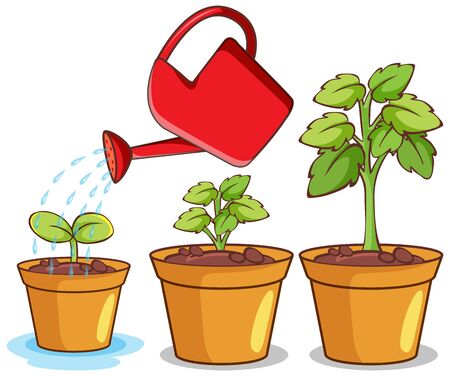Understanding Dry Landscapes and Their Unique Needs
When thinking about creating a beautiful outdoor space in cities like Los Angeles, Phoenix, or Dallas, its important to understand what makes a dry landscape different from traditional gardens. Dry landscapes, often called xeriscapes or drought-tolerant gardens, are common across much of the American Southwest and even in urban areas with limited rainfall.
What Defines a Dry Landscape?
A dry landscape is typically defined by:
| Feature | Description |
|---|---|
| Low Rainfall | Receives less than 20 inches of rain per year |
| Poor Soil Quality | Sandy or rocky soil that drains quickly and holds little moisture |
| High Sun Exposure | Lots of direct sunlight, often with very hot summers |
| Water Restrictions | Limits on watering lawns and plants due to drought regulations |
Common Challenges in Dry Landscapes
Gardening in a dry environment comes with its own set of hurdles. Homeowners often deal with:
- Bare patches where grass won’t grow
- Erosion from sudden rains or wind
- Invasive weeds taking over open soil areas
- Bills piling up from overwatering thirsty plants that don’t belong in the climate
- The struggle to maintain curb appeal without using lots of water or chemicals
Why Specialized Groundcovers Matter for Dry Gardens
This is where choosing the right groundcovers becomes essential. Groundcovers are low-growing plants that spread across the soil, acting like a living mulch. In dry landscapes, they offer several benefits:
- Water Conservation: Drought-tolerant groundcovers require less frequent watering than traditional lawns.
- Erosion Control: Their roots help hold the soil together during heavy rains or windy days.
- Weed Suppression: A thick mat of groundcover blocks sunlight from reaching weed seeds.
- Curb Appeal: Many options come with colorful flowers or interesting textures for year-round beauty.
- Low Maintenance: Once established, these plants thrive with minimal care—perfect for busy city living.
The Takeaway: Tailoring Plant Choices to Your Climate
If you live in an area prone to droughts or strict water rules, picking groundcovers adapted to dry conditions isnt just practical—its key to having a garden that looks great and fits into American urban life. By understanding your landscape’s unique needs, you’ll be well on your way to making smart choices for your outdoor space.
2. Benefits of Using Groundcovers in Drought-Prone Areas
Why Choose Groundcovers for Dry Landscapes?
Groundcovers are a smart choice when you’re landscaping in areas that don’t get much rain. They do more than just fill empty spots—they help your garden stay healthy, save water, and look great all year long. Let’s break down why groundcovers are so valuable for xeriscaping, especially if you’re dealing with drought conditions.
Practical Advantages of Groundcovers
| Benefit | How It Helps Your Landscape |
|---|---|
| Water Conservation | Most groundcovers need less water than traditional lawns or bedding plants. Their dense growth shades the soil, reducing evaporation and helping moisture stick around longer, which is a big deal in dry climates like California or Arizona. |
| Weed Suppression | A thick mat of groundcover acts like a natural weed barrier. By covering bare earth, these plants make it tough for unwanted weeds to take root and compete for resources. |
| Soil Erosion Control | Groundcovers hold soil in place with their spreading roots. This helps prevent wind and water from washing away precious topsoil—especially important on slopes or exposed areas prone to erosion. |
| Low Maintenance | Once established, most drought-tolerant groundcovers require little mowing, pruning, or fertilizing—saving you time and money on upkeep. |
Aesthetic Perks for Urban Spaces and Small Yards
If you live in a city apartment or have a small yard, groundcovers add layers of texture and color without making your space feel crowded. They can soften hard edges around patios or pathways and even fill tricky spots where grass won’t grow. From silvery blue foliage to bright yellow blooms, there’s a groundcover to match any modern urban style.
Popular Groundcover Choices for Xeriscaping
- Sedum (Stonecrop): Perfect for sunny balconies; thrives with minimal water.
- Dymondia: Great between stepping stones; stays low and dense.
- Lantana: Offers colorful flowers; attracts pollinators like butterflies.
- Creeping Thyme: Aromatic leaves; tolerates foot traffic and heat.
Tip:
Try mixing different types of groundcovers for an interesting look that changes through the seasons—plus added resilience against pests and disease.

3. Key Factors to Consider When Choosing Groundcovers
Selecting the right groundcovers for a dry landscape in the U.S. means thinking about your unique space, climate, and garden style. Here are some key points to help you pick groundcovers that will thrive and look great on your property.
Soil Type
Different groundcovers do better in certain soil conditions. For example, sandy soils drain fast but don’t hold nutrients well, while clay soils stay moist longer. Before buying plants, check your soil type. If you aren’t sure, grab a handful—sandy soil feels gritty, clay feels sticky.
| Soil Type | Best Groundcover Examples | U.S. Regions |
|---|---|---|
| Sandy | Ice plant, Sedum, Creeping thyme | Southwest, Coastal California |
| Clay | Liriope, Creeping Jenny, Ajuga | Southeast, Midwest |
| Loamy (balanced) | Purple sage, Blue star creeper, Bearberry | Northeast, Pacific Northwest |
Sun Exposure
How much sun does your garden get? Some groundcovers love full sun all day; others prefer shade or just morning light. Planting the wrong type can lead to poor growth or burnt leaves. Here’s a quick guide:
| Sun Level | Groundcover Ideas |
|---|---|
| Full Sun (6+ hrs) | Creeping phlox, Ice plant, Lamb’s ear |
| Partial Shade (3-6 hrs) | Pachysandra, Sweet woodruff, Ajuga |
| Full Shade (<3 hrs) | Mosses, Vinca minor (Periwinkle), Wild ginger |
Climate Zone Matters
The USDA Hardiness Zone Map divides the U.S. into zones based on winter temperatures. Picking groundcovers suited for your zone means less maintenance and healthier plants. If you live in Phoenix (Zone 9-10), choose drought-tolerant options like lantana or ice plant. In Chicago (Zone 5-6), try snow-in-summer or creeping juniper.
Quick Reference Table: Climate Zones & Groundcovers
| USDA Zone Range | Drought-Tolerant Groundcovers |
|---|---|
| 3-5 (Cold North) | Bunchberry, Snow-in-summer, Creeping juniper |
| 6-8 (Mid-Atlantic/Midwest) | Creeping phlox, Ajuga, Bearberry |
| 9-11 (Southwest/California) | Lantana, Ice plant, Dymondia |
Garden Design & Style Tips
Your groundcover should fit the vibe of your outdoor space—whether you’re going for modern minimalism or a lush urban oasis. In smaller city yards or balconies, low-growing types like blue star creeper give a clean look and won’t overwhelm the space. For a natural style in bigger gardens, mix several groundcovers with different leaf textures and colors.
Tips for Matching Groundcovers to Your Style:
- If you have a small urban balcony: Try trailing sedums in containers for easy care and a modern touch.
- If you want pollinator-friendly: Choose flowering varieties like creeping thyme or phlox.
- If you need erosion control on slopes: Use deep-rooted options like bearberry or creeping juniper.
The right groundcover makes your dry landscape beautiful and sustainable—just match it to your region’s needs and your personal taste!
4. Top Groundcover Options for Dry American Landscapes
If you’re looking to refresh your yard, patio, or even a sunny city balcony, choosing the right drought-tolerant groundcover is key. These plants save water, cut down on maintenance, and add a pop of color or texture to small urban spaces. Here are some top choices popular across the U.S., along with their standout features.
Creeping Thyme
Why it’s great: Creeping thyme is loved for its fragrant foliage, tiny purple or pink flowers, and ability to handle foot traffic—perfect for walkways or between stepping stones.
Hardiness: USDA zones 4-9
Maintenance: Very low; just trim back after blooming if needed.
Blue Fescue
Why it’s great: This ornamental grass adds a modern touch with its blue-silver tufts. It stays compact and looks sharp in small landscapes or containers.
Hardiness: USDA zones 4-8
Maintenance: Minimal; occasional deadheading keeps it tidy.
Sedum (Stonecrop)
Why it’s great: Sedums are succulents that come in many shapes and colors—from mats of green to bright golds and reds. They thrive in tough conditions and need almost no care.
Hardiness: USDA zones 3-9 (varies by type)
Maintenance: Very low; drought- and heat-resistant.
Groundcover Comparison Table
| Plant | Main Feature | USDA Hardiness | Water Needs | Maintenance Level |
|---|---|---|---|---|
| Creeping Thyme | Aromatic, can handle foot traffic | 4-9 | Low | Very Low |
| Blue Fescue | Bluish color, compact grass | 4-8 | Low | Minimal |
| Sedum (Stonecrop) | Diverse colors & textures, succulent | 3-9* | Very Low | Very Low |
*Check individual sedum species for exact hardiness range.
No matter how big or small your outdoor area is, these groundcovers offer easy-care solutions perfect for dry climates. Try mixing them up for year-round interest and a style that suits any modern American home or apartment balcony.
5. Planting and Maintenance Tips for Lasting Success
Get Off to a Great Start: How to Plant Your Groundcovers
When you’re working with a dry landscape, it’s important to give your groundcovers the best chance from day one. Here are some simple steps:
- Prepare the soil: Loosen the top few inches and remove any weeds or rocks. Mix in some compost if you can—it helps hold just enough moisture without making things soggy.
- Space plants right: Check the tags or ask at your local nursery. Most drought-tolerant groundcovers need a little breathing room, so don’t crowd them.
- Plant during cooler hours: Early morning or late afternoon is best. It keeps roots from getting stressed by heat.
Mulching Matters: Keep Moisture In, Weeds Out
A good layer of mulch is a must for dry spaces! Here’s what you need to know:
| Type of Mulch | Best For | Tips |
|---|---|---|
| Bark Chips | Larger areas, natural look | 2-3 inches deep; refresh every year |
| Gravel/Rocks | Modern or desert style yards | Great for drainage; avoid piling against stems |
| Pine Needles | Small urban spaces, under pines | Add slowly—can lower soil pH over time |
Smart Watering: Less Is More!
Drought-loving groundcovers like it dry, but even these tough plants need help at first:
- Right after planting: Water deeply so roots settle in.
- The first month: Water once or twice a week, depending on rain and temperature.
- After established (usually 6–8 weeks): Cut back to every other week—or less! Most native and drought-tolerant plants prefer it that way.
- Tip: Morning watering is better than evening to prevent mildew and save water.
Troubleshooting Common Issues
| Problem | Possible Cause | What to Do |
|---|---|---|
| Browning leaves/stems | Too much water or poor drainage | Let soil dry out before next watering; check for compacted soil underneath mulch or gravel. |
| Poor growth/spreading slowly | Lack of sunlight or nutrients | Move to sunnier spot if possible; add a slow-release organic fertilizer in spring. |
| Pest issues (like aphids or snails) | Damp conditions or overcrowding | Simplify watering; thin out crowded areas; use non-toxic pest control if needed. |
Your Ongoing Care Checklist
- Sweep up fallen leaves and debris regularly—especially on city balconies—to keep things tidy and reduce pests.
- If you notice dead patches, trim them back and let healthy parts fill in naturally.
- Avoid using too much fertilizer—drought-tolerant groundcovers thrive on neglect!
- If your space is small (like an apartment patio), try grouping groundcover pots together for extra shade and moisture retention.
- Watch for weeds after rain—pull them early so they don’t compete with your plants.
6. Inspiring Ideas for Small Spaces and Urban Yards
Maximizing Greenery in Compact Areas
Just because you have a small patio, city balcony, or tiny front yard doesn’t mean you have to give up on having a lush, vibrant landscape. Groundcovers are an awesome way to bring life to tight spaces while keeping maintenance low and water use efficient. With the right choices, you can turn even the smallest spot into an eye-catching green retreat that fits perfectly with urban living.
Creative Ways to Use Groundcovers
- Potted Layers: Layer drought-tolerant groundcovers like creeping thyme or sedum around taller container plants for a full, textured look on balconies or patios.
- Between Pavers: Fill gaps in stepping stones or concrete pavers with hardy varieties such as blue star creeper or dymondia for a soft, inviting feel underfoot.
- Vertical Planters: Use wall-mounted planters or pocket gardens filled with trailing groundcovers like ice plant or trailing rosemary for instant curb appeal.
- Edging & Borders: Line walkways or raised beds with low-growing groundcovers to define spaces and create a neat, finished appearance.
- Miniature Meadows: Create a “mini meadow” look by mixing small-scale groundcovers in window boxes for a wild yet tidy style that’s perfect for city living.
Popular Drought-Tolerant Groundcovers for Urban Spaces
| Groundcover | Height | Best For | Extra Perks |
|---|---|---|---|
| Creeping Thyme | 1-2″ | Pots, between pavers | Aromatic foliage, pollinator-friendly |
| Sedum (Stonecrop) | 2-4″ | Pots, borders, vertical planters | Tough, colorful foliage |
| Dymondia | 1-2″ | Paving joints, sunny edges | Tolerates foot traffic, silvery color |
| Blue Star Creeper | 1-3″ | Paving gaps, shade spots | Tiny blue flowers spring-summer |
| Ice Plant (Delosperma) | 1-3″ | Pots, hanging baskets, walls | Bright flowers, loves heat and sun |
| Trailing Rosemary | 6-12″ | Borders, vertical planters | Aromatic leaves, edible herb |
Tiny Space Tips: How to Get Started
- Choose smaller pots: Go for shallow containers to fit ledges and railings easily.
- Add mulch or rocks: Keep moisture in and give your space a modern look.
- Mix textures and colors: Combine different groundcovers for interest all year long.
- Add fairy lights or solar lanterns: Make your mini garden magical after dark!
- Keep it simple: Even just one or two well-chosen plants can transform your urban yard.
Your Dream Green Nook Awaits!
No matter how small your space is—whether it’s a narrow pathway between buildings or a cozy balcony overlooking the street—drought-tolerant groundcovers can help you add beauty and personality without much fuss. They’re easy to care for and let you enjoy more green where it matters most: right at home.


